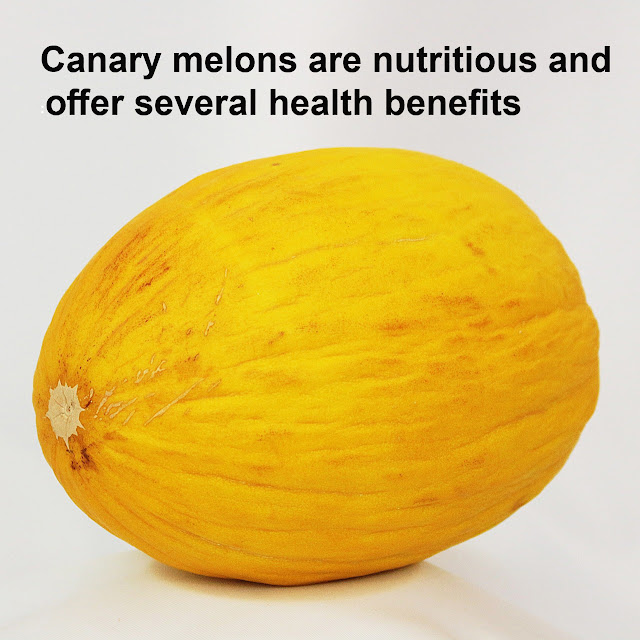Canary melons, also known as Juan Canary melons, are a type of muskmelon with a bright yellow rind and a pale green to white flesh. Here are some key points about canary melons:
Characteristics:
Appearance: They have a smooth, bright yellow skin and an oval shape. The flesh inside is typically light green or white.
Flavor: The flesh is juicy and has a sweet, mildly tangy flavor, often described as a cross between cantaloupe and honeydew.
Size: They are similar in size to other melons, typically weighing between 4 to 5 pounds, though they can vary.
Nutritional Value:
Canary melons are nutritious and offer several health benefits:
Vitamins: Rich in vitamins A and C.
Minerals: Contains potassium and magnesium.
Hydration: High water content makes them hydrating.
Fiber: Good source of dietary fiber.
Culinary Uses:
Canary melons can be used in various culinary applications:
Fresh Consumption: Often eaten fresh, sliced, or cubed.
Salads: Great addition to fruit salads or mixed green salads.
Smoothies and Juices: Can be blended into refreshing drinks.
Desserts: Used in fruit-based desserts like sorbets.
Selection and Storage:
Selection: Choose canary melons that are firm, heavy for their size, and have a sweet aroma. Avoid melons with soft spots or blemishes.
Storage: Uncut melons can be stored at room temperature until ripe. Once ripe, they can be refrigerated for a few days. Cut melons should be stored in the refrigerator and consumed within a few days.
Growing Conditions:
Canary melons thrive in warm, sunny climates. They require well-drained soil and consistent watering. They are typically harvested in late summer to early fall.
Health Benefits:
Hydration: High water content helps with hydration.
Immune Support: Vitamin C content supports the immune system.
Skin Health: Vitamin A promotes healthy skin.
Digestion: Dietary fiber aids in digestion.
Canary melons are a delicious and versatile fruit, making them a popular choice in various cuisines around the world.

